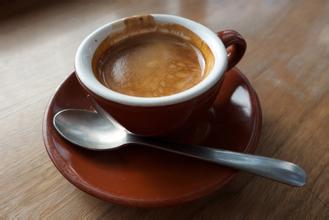Aroma-rich Arabica Coffee Flavor description grindability treatment characteristics of varieties in producing areas
Arabica is deeply loved by Chinese people who have a short history of coffee contact because of its rich fruity flavor. It was introduced into China by missionaries in the 19th century. It is widely planted in Panzhihua, Sichuan Province and Jinsha River dry and hot valley area with an altitude of more than 1000 meters in western Yunnan Province. The sunshine time in this area is long and the temperature difference between day and night is large. The local people solve the problem of insufficient seasonal rainfall by diverting water up the mountain, and achieve the unique aroma of "Chinese coffee". Among them, Especially in Panzhihua, Sichuan Province, Arabica coffee is the most. Compared with Yunnan and Hainan, Panzhihua, which is located in the dry and hot valley, has longer sunshine, higher altitude, greater temperature difference, good light quality and more virgin land. It is the most suitable area for planting Arabica coffee. Banpo coffee farmers take advantage of this advantage, using a unique planting and processing technology: first,"the whole process does not fall to the ground": from the collection of coffee beans to processing into finished products, coffee has been kept free from the influence of soil and other impurities, to ensure taste and quality; second,"graded collection": because coffee beans are not uniform mature, so the collection of coffee beans of the same level is concentrated, rather than mixed together; Such as manual operation, the use of a large number of labor manual collection, classification, processing. The coffee aroma here is rich, sour and bitter balance, and fruit flavor, which is very popular with consumers and foreign coffee beverage giants.
At present, coffee has been planted in more than 50 countries in the world, but most of the good coffee beans are concentrated in the equatorial zone between 25 degrees north latitude and 30 degrees south latitude, with high altitude, tropical climate and fertile soil, in order to grow high-quality coffee beans with full particles and strong coffee flavor. Coffee beans are grown all over the world, mainly in Brazil, Colombia, Indonesia and Vietnam. Besides geographical location, there are many other factors that affect coffee quality: planting method, soil fertility, weather, especially rainfall and light, and exact latitude. All these factors combined with the way coffee beans are processed create the diversity of coffee produced in different countries and regions of the world. Arabica and Canephora are two very important varieties in the commercial coffee industry. Arabica coffee accounts for 70 -80% of all coffee production.
Although both are widely cultivated, Arabica Canephora Robusta has significant differences. Beans vary, plants vary, and in turn, the scope of their use varies. Arabica coffee has a rich, delicate taste, a strong aroma, a high acidity, and a smooth texture: it is less likely to taste bitter; and it has less caffeine than Robusta coffee. Its excellent flavor and aroma make it the only coffee that can be drunk directly on its own. The world famous Blue Mountain Coffee is made from Arabica coffee beans. Robusta coffee beans have a unique aroma and bitterness, and the caffeine content is much higher than Arabica. To make a cup of authentic Italian coffee, you need to mix a certain proportion of high-quality Robusta coffee beans with Arabica coffee beans. Because among the many choices of coffee beans, high-quality Robusta coffee beans can make Italian coffee show its due personality, increase the taste of coffee, make coffee strong, but also increase the bitterness, make coffee golden oil more attractive, if carefully tasted, can also taste chocolate or cocoa taste.
There has long been a theory that roberstadt makes punching produce better crema, and that's true. Because robersta has half the aroma and aromatic oils of Arabica coffee. This means that less oil is extracted into the coffee, thus reducing the impact of oil on foam stability, so increasing the robersta will reduce the overall amount of oil extracted from the coffee powder, which means you have a higher probability of making a more stable and richer Crema.

Important Notice :
前街咖啡 FrontStreet Coffee has moved to new addredd:
FrontStreet Coffee Address: 315,Donghua East Road,GuangZhou
Tel:020 38364473
- Prev

Robusta Coffee Grind Characteristics Variety Producing Area Taste Treatment Fine Coffee Bean Introduction
Robusta accounts for 25% to 35% of coffee bean production and is mainly produced in Indonesia (one of the varieties produced is a water-washed coffee bean, a hybrid of Robusta and Arabica, the only coffee bean on the Chinese market that can be drunk as a single product), Vietnam, Africa (Ivory Coast, Nigeria, Angola)
- Next

Description of the Flavor of Angolan Coffee Bean; introduction to the manor of variety producing area
The Angolan government is currently working on a development plan to revitalize coffee production in order to restore coffee production across the country to the level of the 1970s. Manuel Dias, director of the Angolan Coffee Agency, recently told the local press that the Angolan government's plan mainly includes expanding growing areas, increasing investment, working hard to support coffee farmers and promoting fine varieties. Uige, Bengo
Related
- Detailed explanation of Jadeite planting Land in Panamanian Jadeite Manor introduction to the grading system of Jadeite competitive bidding, Red bid, Green bid and Rose Summer
- Story of Coffee planting in Brenka region of Costa Rica Stonehenge Manor anaerobic heavy honey treatment of flavor mouth
- What's on the barrel of Blue Mountain Coffee beans?
- Can American coffee also pull flowers? How to use hot American style to pull out a good-looking pattern?
- Can you make a cold extract with coffee beans? What is the right proportion for cold-extracted coffee formula?
- Indonesian PWN Gold Mandrine Coffee Origin Features Flavor How to Chong? Mandolin coffee is American.
- A brief introduction to the flavor characteristics of Brazilian yellow bourbon coffee beans
- What is the effect of different water quality on the flavor of cold-extracted coffee? What kind of water is best for brewing coffee?
- Why do you think of Rose Summer whenever you mention Panamanian coffee?
- Introduction to the characteristics of authentic blue mountain coffee bean producing areas? What is the CIB Coffee Authority in Jamaica?

